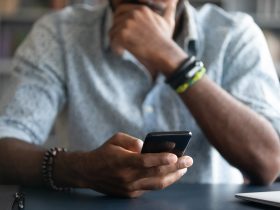With 1.4 billion accounts, Gmail is one of the most popular email services available. Developed by Google, the service is more than simply messages. Anyone who uses Gmail has access to a Google Account, which opens the door to free products like Google Sheets, Google Docs, and Google Photos.
While this puts a plethora of free services into the hands of Gmail users, it also puts them at risk. Users who store work documents, finance sheets, and family photos through their Gmail accounts are highly sought out targets by hackers. Here’s what you should know.
How to Know If Your Gmail Account Was Hacked
In October of 2018, Google announced they were shutting down Google Plus, their take on a social network. The decision was in direct response to a security vulnerability discovered in March earlier that year that potentially exposed private information of up to half a million Google Plus users. This information included phone numbers, messages, and email addresses.
In comparison to other breaches, this was a small bump for Google and Gmail. But because it seems that there’s a new breach or data leak every day, taking some precautions to keep your Gmail account safe from hackers is a smart step to take.
In some instances, users might not even realize they have a hacked Gmail account. But luckily, there are two simple ways to detect an intruder.
- Email forwarding – To keep their actions inconspicuous and to avoid flagging you with read or deleted emails, hackers will often gain access to an account and then have copies of emails forwarded to an outside account. This way, they can read not just your store sales emails or ads, but your bank emails, credit card emails, personal emails, and more. To see if a hacker is doing this, go to the forwarding page under the “Settings” tab to see if your emails are being forwarded.
- Account activity – You can take a few minutes to go through your account and see if you notice anything suspicious, like emails marked as read when you haven’t seen them yet or strange emails in your deleted folder. But a surefire way to tell is to use the “Last Account Activity” feature. You’ll find the link at the bottom of your Gmail account page. When clicked, you’ll be able to see a list with access types, locations, and dates and times of when your account was accessed. If something doesn’t add up, you’ll want to take the steps found in our blog about how to recover a hacked Gmail account.
How to Protect a Gmail Account
Ready to strengthen the security of your Gmail account? Follow these simple steps.
- Activate two-factor authentication – With this feature activated, you’ll be required to put in a code every time you log into your Gmail account. You’ll decide where your code is sent to in advance so a hacker can’t get into your account, even if they have your email address and password. Two-factor authentication can stop a hacker in their tracks.
- Revoke access to third party apps – If you’ve used your Google credentials to sign up to other websites, some may be compromising your account. If there are apps you no longer use or trust, head to Google’s account permissions page to change your settings and block their access to your data.
Remember other smart account tactics, like using a strong password and not sharing your information with anyone else, using a VPN, and only sign in on secure networks that you trust.













